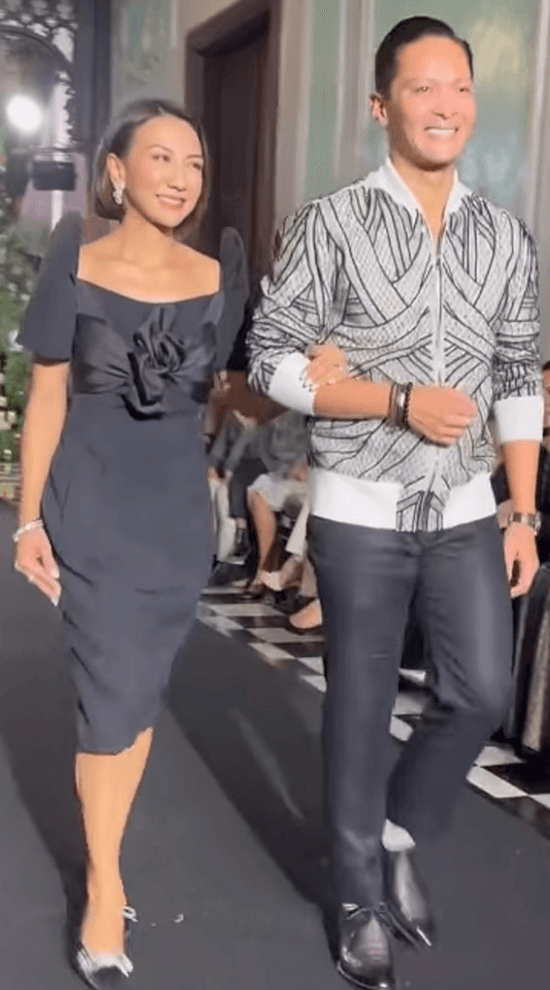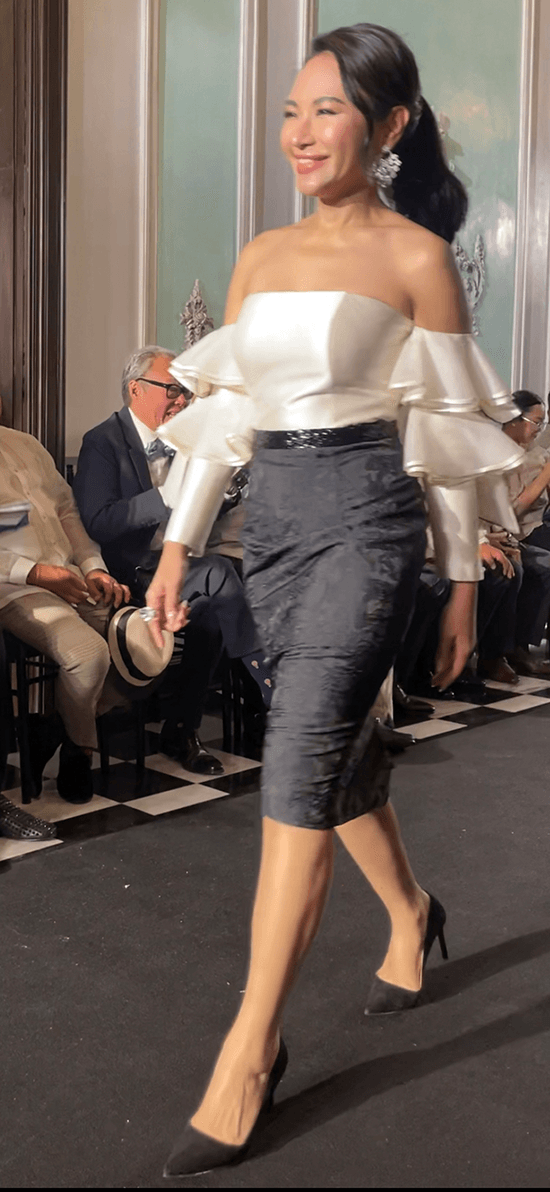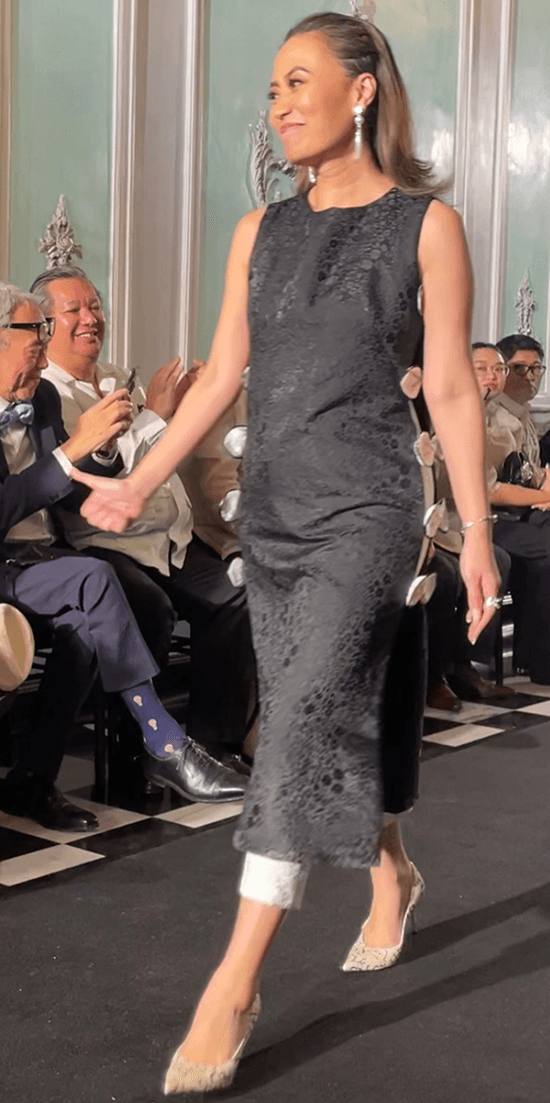Avel Bacudio reinvents the Filipino weave for the world
The humidity levels in Malacañang were pushing 90 percent, yet Avel Bacudio’s muses and models glided down the Goldenberg Mansion hallways-turned-runways with poise and ease, barely breaking a sweat.
All gathered for the second Goldenberg fashion series, an initiative of the First Lady Louise Araneta Marcos. The century-old structure was always linked to the rest of the world: it once was once home to General Arthur MacArthur, Douglas Macarthur’s father, a guesthouse and an office to a Philippine exposition, and the location of the first Senate session. With the First Lady’s Goldenberg series, she once again welcomes change-makers across disciplines and spheres of influence to get a first look at the innovations by some of the country’s foremost designers.
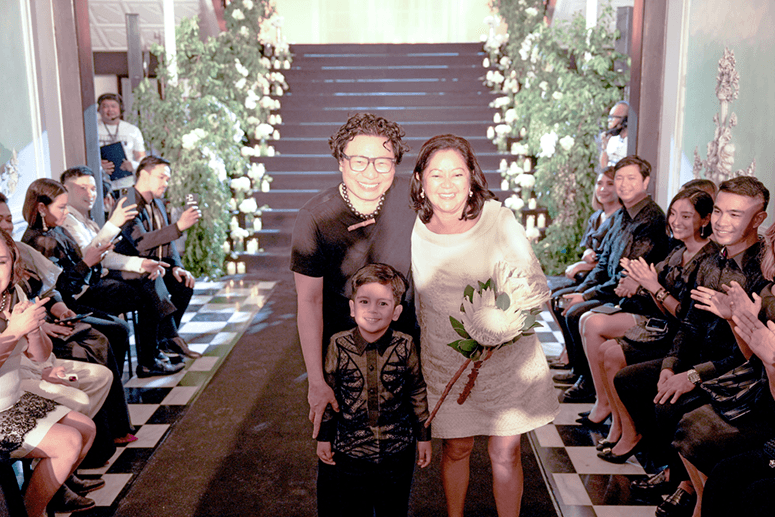
Bacudio’s tropical-friendly update on our weaves couldn’t have come at a more perfect time. Fabrics are the most important part of the process for Bacudio. His collection, “Habi at Burda,” is executed in fabrics he developed with the Department of Science and Technology using banana cavendish, pineapple leaves, water lily and bamboo with our noble fabrics of piña and Mindanao silk and good old reliable pure cotton.
Bacudio is a household name, most notably in menswear. His barongs and suits are a go-to for President Ferdinand Marcos Jr. and his sons Sandro, representative of the First District of Ilocos Norte, and Vincent and Simon. In show business, he is worn by actors like Alden Richards and Jerome Ponce.
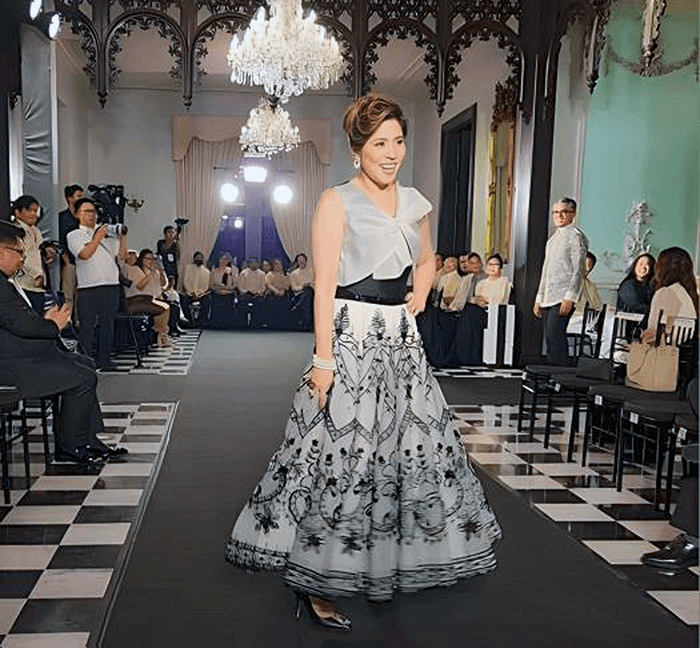
With the Filipiniana’s modernization in recent years, he updated the barong tagalog into bomber jackets, mixing piña and weaves and updating its delicate, intricate embroidery with bold lines depicting Filipino iconography. His womenswear follows this direction with his focus on tailoring, juxtaposing cinched and voluminous proportions with striking patterns and textures.
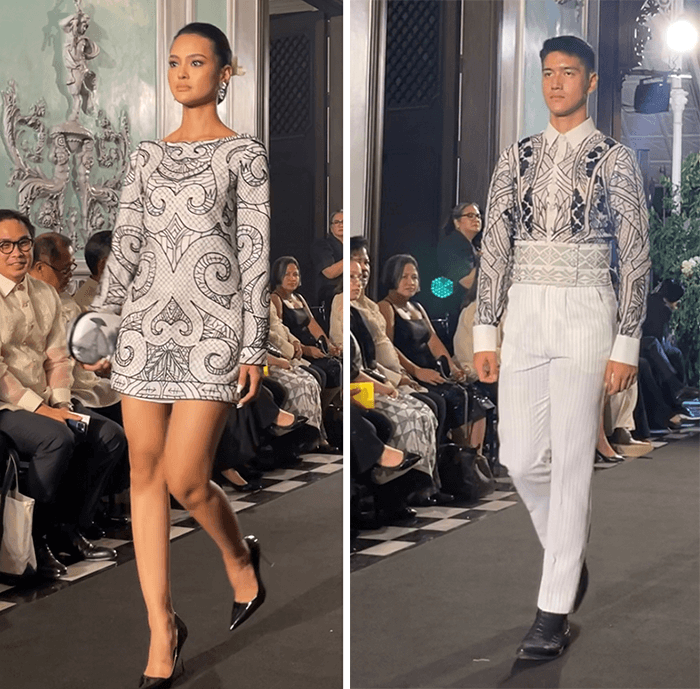
“This is the most significant collection I have worked on in my life because the show isn’t for me, it’s for the weavers and burdaderas,” Bacudio says of “Habi at Burda.” “As a fashion designer, I am introducing what we can do together to the new generation, para maibigay ko sa kanila yung inspirasyon na ipagpatuloy ang naiwan ng ating mga ninuno sa paglikha at sining.”
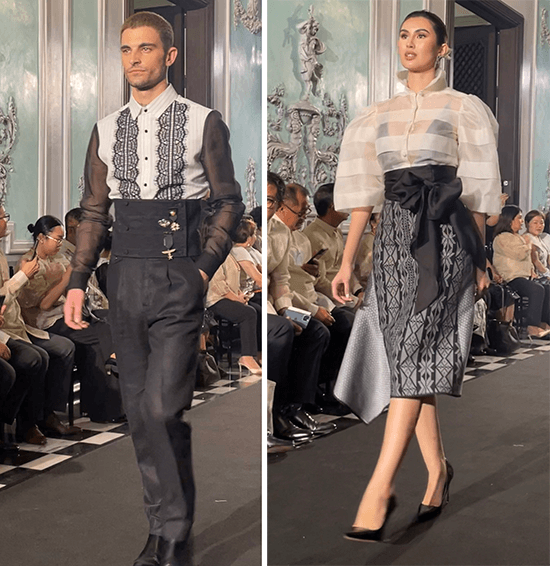
“I’m showing that you can mix and match Filipiniana. You can wear them to the office, after the office. It’s not just gowns. It’s important that the clothes are breathable because we are a tropical country,” he adds, a crucial step towards wearability and keeping our weaving heritage going for the next generation.
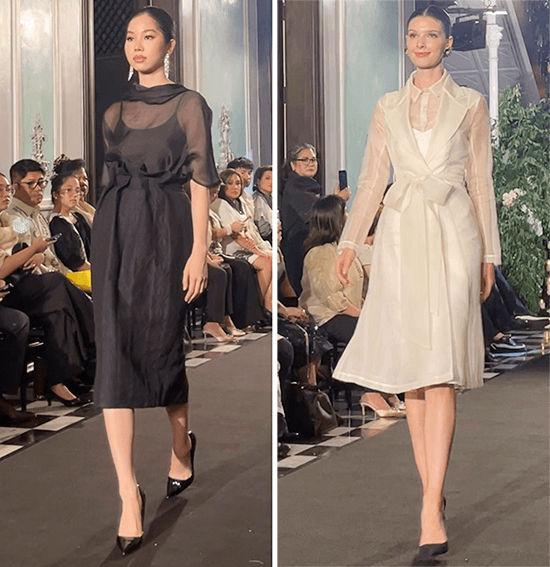
At “Habi at Burda,” Bacudio’s muses Congressman Duke Frasco wore Bacudio’s latest barong jacket, this time with anahaw patterns, arm-in-arm with wife and Tourism secretary Christina Frasco in a classic Avel midi terno. Congressman Migz Villafuerte of Bacudio’s hometown Camarines Sur wore the barong bomber in black with a slim barong in the new breathable piña.
Former Justice undersecretary Emmeline Aglipay Villar donned a silk corset with cuffed frilly sleeves and a structured sampaguita brocade pencil skirt with an embellished waist, all in Bacudio’s new fabrics—and shared a quick kiss with husband senator Mark Villar in the audience. Tourism Promotions Board chief Marga Nograles, an advocate for Filipino weavers even before public office, wore a sleeveless midi shift in the same sampaguita brocade, surprisingly easy-breezy in this shape.
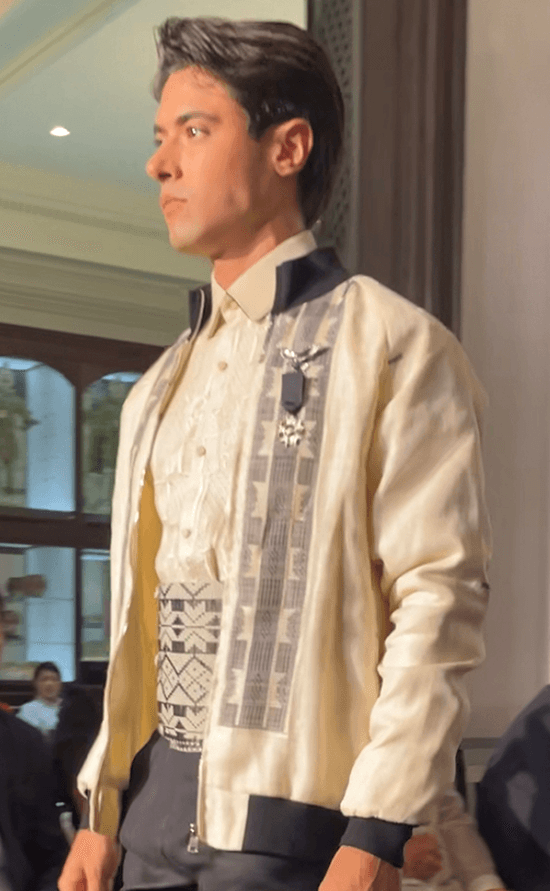
The second half of the collection explored ‘50s silhouettes. Bacudio used the weight of the inabel, ilaglis textile from Kalinga, sapatungan and sumping fabric from Zamboanga to structure and shape tea-length skirts and bar jackets. Aklan piña and Mindanao silk blend, done without embellishment, gave lightness to billowy blouses and coats. For men, Bacudio cinched slim barongs with inabel and piña-blend cummerbunds.
The third and final part of the collection was where he further explored the Filipiniana. Bacudio traveled throughout the country in preparation for this collection. For men, his classic bombers are updated with a slim fit, emphasized with a cummerbund and higher waistband, highlighting the woven Pintados patterns, originally seen as tattoos on Visayan warriors, throughout the piece. The women wore elegant camisas in piña and Mindanao silk, some cinched with an Iloilo silk bow, while others were styled in inabel and ilaglis textile from Kalinga to structure with panels in the style of a tapis and a saya. Men wore Mindanaoan linen trousers while the hand embroidery is from Lumban, Laguna.
Why the East-meets-West direction? Bacudio explains. “We need to expose the talent of our weavers and our local fabric to international markets.” It’s a testament to Filipino world-class excellence.


